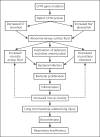Spleen Tyrosine Kinase as a Target Therapy for Pseudomonas aeruginosa Infection
- PMID: 29925062
- PMCID: PMC6757160
- DOI: 10.1159/000489863
Spleen Tyrosine Kinase as a Target Therapy for Pseudomonas aeruginosa Infection
Abstract
Spleen tyrosine kinase (SYK) is a nonreceptor tyrosine kinase which associates directly with extracellular receptors, and is critically involved in signal transduction pathways in a variety of cell types for the regulation of cellular responses. SYK is expressed ubiquitously in immune and nonimmune cells, and has a much wider biological role than previously recognized. Several studies have highlighted SYK as a key player in the pathogenesis of a multitude of diseases. Pseudomonas aeruginosa is an opportunistic gram-negative pathogen, which is responsible for systemic infections in immunocompromised individuals, accounting for a major cause of severe chronic lung infection in cystic fibrosis patients and subsequently resulting in a progressive deterioration of lung function. Inhibition of SYK activity has been explored as a therapeutic option in several allergic disorders, autoimmune diseases, and hematological malignancies. This review focuses on SYK as a therapeutic target, and describes the possibility of how current knowledge could be translated for therapeutic purposes to regulate the immune response to the opportunistic pathogen P. aeruginosa.
Keywords: Cystic fibrosis; Cystic fibrosis transmembrane conductance regulator; Infection; Inflammation; Pseudomonas aeruginosa; Small molecule inhibitor; Spleen tyrosine kinase.
© 2018 S. Karger AG, Basel.
Figures



Similar articles
-
With Complement.J Innate Immun. 2018;10(4):253-254. doi: 10.1159/000493170. Epub 2018 Sep 3. J Innate Immun. 2018. PMID: 30176674 Free PMC article. No abstract available.
-
Piceatannol modulates lung epithelial cellular responses to Pseudomonas aeruginosa.Inflamm Allergy Drug Targets. 2013 Oct;12(5):297-307. doi: 10.2174/18715281113129990011. Inflamm Allergy Drug Targets. 2013. PMID: 23713607
-
Syk inhibitor R406 downregulates inflammation in an in vitro model of Pseudomonas aeruginosa infection.Can J Physiol Pharmacol. 2018 Feb;96(2):182-190. doi: 10.1139/cjpp-2017-0307. Epub 2017 Oct 11. Can J Physiol Pharmacol. 2018. PMID: 29020462
-
The Microbial Endocrinology of Pseudomonas aeruginosa: Inflammatory and Immune Perspectives.Arch Immunol Ther Exp (Warsz). 2018 Oct;66(5):329-339. doi: 10.1007/s00005-018-0510-1. Epub 2018 Mar 14. Arch Immunol Ther Exp (Warsz). 2018. PMID: 29541797 Review.
-
Role of spleen tyrosine kinase in liver diseases.World J Gastroenterol. 2020 Mar 14;26(10):1005-1019. doi: 10.3748/wjg.v26.i10.1005. World J Gastroenterol. 2020. PMID: 32205992 Free PMC article. Review.
Cited by
-
Transcriptome profiling of lung immune responses potentially related to acute respiratory distress syndrome in forest musk deer.BMC Genomics. 2022 Oct 11;23(1):701. doi: 10.1186/s12864-022-08917-7. BMC Genomics. 2022. PMID: 36221054 Free PMC article.
-
Pseudomonas aeruginosa induces p38MAP kinase-dependent IL-6 and CXCL8 release from bronchial epithelial cells via a Syk kinase pathway.PLoS One. 2021 Feb 1;16(2):e0246050. doi: 10.1371/journal.pone.0246050. eCollection 2021. PLoS One. 2021. PMID: 33524056 Free PMC article.
-
With Complement.J Innate Immun. 2018;10(4):253-254. doi: 10.1159/000493170. Epub 2018 Sep 3. J Innate Immun. 2018. PMID: 30176674 Free PMC article. No abstract available.
-
Immunomodulatory role of spleen tyrosine kinase in chronic inflammatory and autoimmune diseases.Immun Inflamm Dis. 2023 Jul;11(7):e934. doi: 10.1002/iid3.934. Immun Inflamm Dis. 2023. PMID: 37506139 Free PMC article. Review.
-
Integrated identification of key immune related genes and patterns of immune infiltration in calcified aortic valvular disease: A network based meta-analysis.Front Genet. 2022 Sep 21;13:971808. doi: 10.3389/fgene.2022.971808. eCollection 2022. Front Genet. 2022. PMID: 36212153 Free PMC article.
References
-
- Taniguchi T, Kobayashi T, Kondo J, Takahashi K, Nakamura H, Suzuki J, et al. Molecular cloning of a porcine gene syk that encodes a 72-kDa protein-tyrosine kinase showing high susceptibility to proteolysis. J Biol Chem. 1991;266:15790–15796. - PubMed
-
- Darby C, Geahlen RL, Schreiber AD. Stimulation of macrophage Fc gamma RIIIA activates the receptor-associated protein tyrosine kinase Syk and induces phosphorylation of multiple proteins including p95Vav and p62/GAP-associated protein. J Immunol. 1994;152:5429–5437. - PubMed
Publication types
MeSH terms
Substances
LinkOut - more resources
Full Text Sources
Other Literature Sources
Miscellaneous

